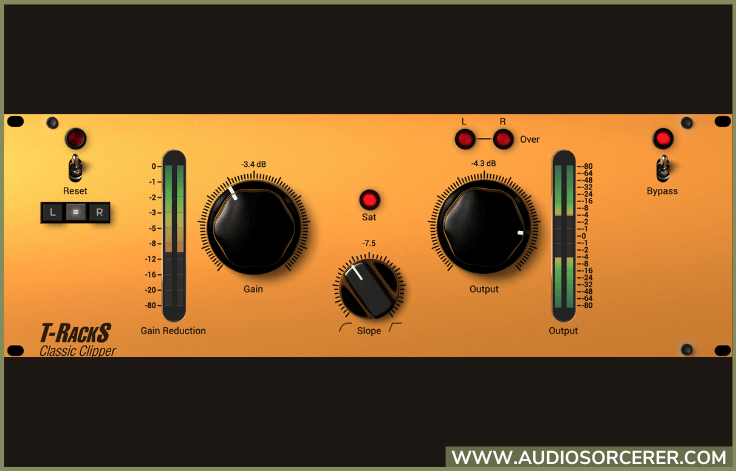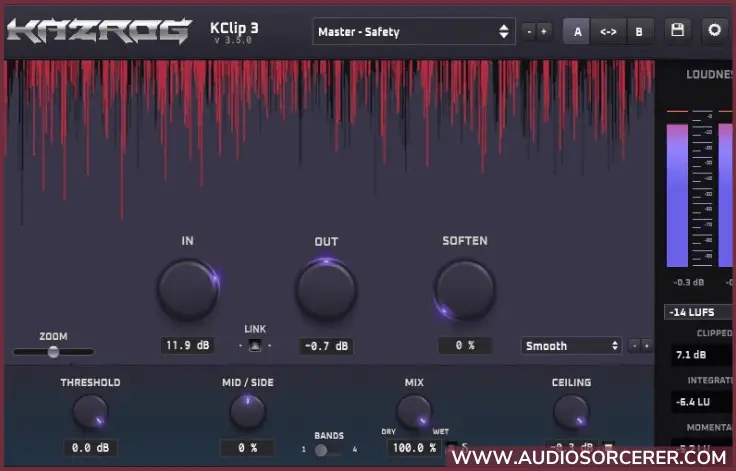
Audio clipping is a form of distortion that occurs when a signal is too strong for a piece of equipment to handle. The result is a waveform that is "clipped" off at the peaks, resulting in a harsh, grating sound.
Many people believe that audio clipping is always a bad thing. However, this is not necessarily the case. In some circumstances, audio clipping can actually be used to make a mix louder and more powerful in a transparent way.
In this article, I'll answer the questions what is audio clipping, why does it occurs, when is it undesirable, and how to avoid it. I'll always reveal to you my top 3 favorite clipping plugins. Let's dig in!
Audio clipping is a type of distortion. It occurs when a signal surpasses a specific threshold or that signal is too strong for a piece of equipment to handle. Audio clipping can cause several problems such as distortion, lost audio information, and decreased overall sound quality. In some cases, clipping can even damage speakers or other types of audio equipment. Clipping can occur in both the digital and analog audio realms.
Analog clipping causes a rounded waveform as the audio starts to clip. The sound is described as overdriven. This type of sound occurs because the device trys to produce an output voltage beyond what it's capable of. Analog clipping isn't necessary bad as it can create a sound that adds character and attitude to a source.
Digital clipping causes a square waveform when the audio starts to clip. This is typically when a sound level surpasses 0 dbFS. In the digital realm, this means the device has run out of 0s and 1s to convert the signal into digital information. Digital clipping is never acceptable.
There are a few different reasons why audio clipping can occur. The most common reason is that the input level is set too high. This usually happens when a person recording or mixing the audio is not experienced in setting levels correctly.
Another common reason for audio clipping is that the audio source is too loud. In some cases a microphone may be too sensitive for the level it is picking up. This can occur when recording high amplitude instruments like drums. Make sure to pick the right microphone for the application.
Finally, audio clipping can also occur when mixing within a daw if the master output level is overloaded. Make sure to always leave -6 to -3dB of headroom for the mastering engineer. To avoid clipping, you can also apply a brickwall limiter to the master bus.
Related Article: Audio Compressor Vs Limiter | Do You Know The Difference?
Now that I've answered the questions what is audio clipping and why does it occurs, how can it be avoided? There are a few things you can do to avoid audio clipping.
First, make sure your sound system is not turned up too loud. If you're using a microphone, make sure it is not too close to the sound source.
Second, avoid pushing your amplifier too hard. If you're using a software amplifier, be careful not to turn the volume up too high.
Finally, if you're recording audio, be careful not to overload the input of your audio interface. If you're clipping the input signal, you can try using a pad to reduce the level.
No, audio clipping is not always a bad thing. In some cases, audio clipping can actually be used to create desired sound effects. For example, a lot of EDM music is intentionally heavily clipped in order to create a certain sound. This sound is known as " clipping distortion" and can be used to create a sense of excitement or energy in a track. Clipping distortion can also be used in rock and metal music to create a sense of urgency and power. In these genres, clipping is often used in conjunction with other forms of distortion to create a signature sound.
The most common case for clipping audio is in mastering. Using a clipping plugin will help make the track louder in a transparent way. This transparency is something that limiters just can't achieve. I will introduce you to some of my favorite clipping plugins later in this article.
Short of these two use cases, audio clipping is undesirable.
MBS Audio - hifi specialist & audio consultant
We can't discuss the topic what is audio clipping and not talk about clipping plugins. When it comes to the best clipping plugins, there are 3 that I recommend. These plugins provide hard or soft clipping and are an asset to any mastering chain. Let's first start with my favorite which is the Black Salt Audio Clipper.
If you're looking for an audio clipping plugin that can give you powerful and loud masters then look no further than the Black Salt Audio Clipper. With its easy-to-use interface, you can dial in your sound in seconds. It also sounds great when used on buses and especially with drums.
The Black Salt Audio Clipper is strictly a hard-clipping plugin. In my testing, it had shown to be the most transparent of any clipping plugin I have ever come across. It kept the punch and impact of the mix intact while getting me the loudness I needed in modern-day mastering.
If want to add a clipping plugin to your mastering chain then the Black Salt Audio Clipper is definitely my first pick.
BUY Black Salt Audio Clipper ➡️ CLICK HERE
Related Article: Black Salt Audio Clipper Review: How To Get Loud Masters

The IK Multimedia T-Racks Classic Clipper plugin is a great tool for clipping audio files. The plugin is very user-friendly and can be used by anyone, regardless of their experience level. It is probably the most known clipping plugin as it has been around for decades.
The IK Multimedia T-Racks Classic Clipper provides the user with a slope option that goes between soft and hard clipping. This makes it one of the more versatile clipping plugins out there.
With its tried and true sound, you can count on the IK Multimedia Classic Clipper to get the job done.
BUY IK Multimedia T-Racks Classic Clipper ➡️ CLICK HERE

The Kazrog KClip 3 clipping plugin is the cheapest on my list. Upon the release of its first version, it quickly became a cult classic amongst many engineers. As newer versions have come out, the plugin has gotten even better.
If you are looking for an inexpensive clipping plugin, then the Kazrog KClip 3 is definitely work a look.
BUY Kazrog KClip 3 ➡️ CLICK HERE
Related Article: The Best Mastering Plugins And How To Use Them Right
The question of what is audio clipping has been answered and you now know that it is not always a bad thing. You also learned 3 of the best clipping plugins out there to help make your mixes and masters hit harder. Whether you are recording, mixing, or mastering music, audio clipping is something you must know about. As bad as clipping can be, don't forget, it is a great tool to keep in your engineering toolkit.
If you found the information in this article useful, please consider subscribing to my blog for more music production tips, tricks, and advice. Now, go make some loud masters with clipping!
"Some of the links within this article are affiliate links. These links are from various companies such as Amazon. This means if you click on any of these links and purchase the item or service, I will receive an affiliate commission. This is at no cost to you and the money gets invested back into Audio Sorcerer LLC."